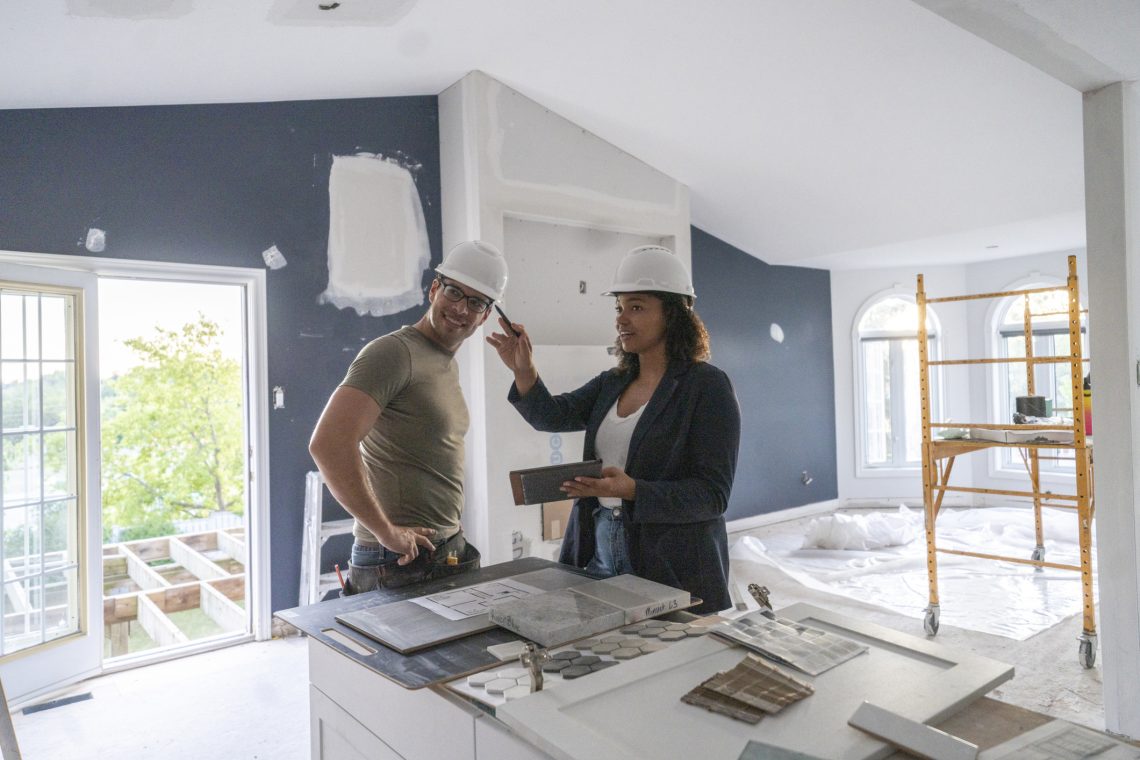The Ultimate Guide to Home Improvement: Transforming Your Living Space
Introduction
Home improvement is more than just a trend; it’s a way to personalize, enhance, and add value to your living space. From simple updates to major renovations, the scope of home improvement is vast, offering opportunities to enhance comfort, aesthetics, and functionality. Whether you’re considering a kitchen remodel, bathroom upgrade, or whole-home renovation, understanding the intricacies of home improvement can lead to successful and satisfying outcomes.
This comprehensive guide covers essential aspects of home improvement, including planning and budgeting, popular renovation ideas, DIY versus professional work, and ongoing maintenance. Let’s dive into the world of home improvement to help you transform your living space into a dream home.
1. Planning Your Home Improvement Project
Effective planning is crucial for any successful home improvement project. It ensures that your project is well-organized, stays within budget, and meets your desired outcomes.
1.1 Define Your Goals
Before you start, clearly define what you want to achieve:
- Functionality: Are you looking to enhance the usability of a space? For example, you might want to create an open-concept kitchen or add more storage.
- Aesthetics: Do you want to update the style and appearance of your home? Consider what design elements and trends appeal to you.
- Value: Are you aiming to increase your home’s market value? Focus on high-impact areas that offer a good return on investment, such as kitchen and bathroom remodels.
1.2 Set a Budget
Establish a realistic budget for your project:
- Cost Estimates: Research costs for materials, labor, and any additional expenses. Use online calculators or consult with professionals for accurate estimates.
- Contingency Fund: Set aside an additional 10-20% of your budget for unexpected costs. Renovations often uncover hidden issues that need addressing.
- Financing Options: Consider various financing options, such as personal savings, home equity loans, or lines of credit.
1.3 Research and Inspiration
Gather ideas and inspiration for your project:
- Design Magazines and Websites: Explore home design magazines, websites, and social media platforms for trends and ideas.
- Home Improvement Shows: Watch television shows and videos that showcase different renovation styles and techniques.
- Consult Professionals: Seek advice from architects, interior designers, or contractors to get professional insights and recommendations.
1.4 Create a Project Plan
Develop a detailed plan for your project:
- Scope of Work: Outline the specific tasks and improvements you want to make.
- Timeline: Establish a timeline for completing the project, including milestones and deadlines.
- Permits and Regulations: Check if your project requires permits or approvals from local authorities. Ensure that you comply with building codes and regulations.
2. Popular Home Improvement Projects
Home improvement projects can range from minor updates to major renovations. Here are some popular projects to consider:
2.1 Kitchen Remodel
The kitchen is often considered the heart of the home. A kitchen remodel can enhance functionality, style, and value.
Key Upgrades
- Cabinets: Update or refinish cabinets to improve storage and appearance. Consider custom or semi-custom options for a personalized look.
- Countertops: Replace old countertops with durable materials like granite, quartz, or marble.
- Backsplash: Add a new backsplash to create a focal point and protect the walls from cooking splatters.
- Appliances: Upgrade to energy-efficient appliances for better performance and reduced utility costs.
- Lighting: Install modern lighting fixtures to brighten up the space and create ambiance.
Design Tips
- Open Concept: Consider removing walls or creating an open floor plan to improve flow and connectivity.
- Storage Solutions: Incorporate smart storage solutions such as pull-out shelves, lazy Susans, and built-in organizers.
- Color Scheme: Choose a cohesive color scheme that complements your home’s overall design.
2.2 Bathroom Renovation
A bathroom renovation can enhance comfort, style, and functionality.
Key Upgrades
- Vanity and Sink: Replace outdated vanities and sinks with modern options that offer better storage and style.
- Shower or Tub: Upgrade to a walk-in shower, freestanding tub, or a combination of both for a luxurious feel.
- Tiles and Flooring: Install new tiles or flooring to refresh the look of your bathroom. Consider heated floors for added comfort.
- Lighting and Fixtures: Update lighting fixtures and faucets to match your new design and improve functionality.
Design Tips
- Spa-Like Atmosphere: Create a relaxing atmosphere with features such as a rain showerhead, soaking tub, and calming color palette.
- Storage Solutions: Incorporate built-in shelves, medicine cabinets, and storage niches to maximize space.
- Ventilation: Ensure proper ventilation to prevent moisture buildup and maintain air quality.
2.3 Living Room Makeover
The living room is a central space for relaxation and entertaining. A makeover can breathe new life into this area.
Key Upgrades
- Furniture: Update or replace furniture to enhance comfort and style. Consider new sofas, chairs, and coffee tables.
- Flooring: Install new flooring, such as hardwood, laminate, or carpet, to improve the room’s look and feel.
- Paint and Wallpaper: Refresh walls with a new coat of paint or stylish wallpaper.
- Decor: Add decorative elements such as rugs, curtains, artwork, and accessories to personalize the space.
Design Tips
- Layout: Arrange furniture to create a functional and inviting layout. Consider creating distinct areas for lounging, reading, or entertaining.
- Lighting: Use a combination of ambient, task, and accent lighting to enhance the room’s atmosphere.
- Color Scheme: Choose a color scheme that complements your home’s overall design and creates a cohesive look.
2.4 Exterior Improvements
Improving your home’s exterior can enhance curb appeal and functionality.
Key Upgrades
- Siding and Paint: Refresh or replace siding and paint to improve the appearance and protect your home from the elements.
- Roofing: Repair or replace roofing to ensure protection and prevent leaks.
- Landscaping: Upgrade landscaping with new plants, hardscaping features, and outdoor lighting.
- Deck or Patio: Add or upgrade a deck or patio to create outdoor living spaces for relaxation and entertaining.
Design Tips
- Curb Appeal: Enhance curb appeal with features such as a new front door, updated house numbers, and well-maintained landscaping.
- Outdoor Living: Create functional outdoor spaces with comfortable seating, dining areas, and outdoor kitchens.
- Sustainability: Consider eco-friendly options such as energy-efficient windows, solar panels, and drought-tolerant landscaping.
3. DIY vs. Professional Work
Deciding whether to tackle a home improvement project yourself or hire professionals depends on the complexity of the task, your skill level, and your budget.
3.1 DIY Home Improvement
DIY projects can be rewarding and cost-effective if done correctly.
Benefits
- Cost Savings: Save money on labor costs by completing the work yourself.
- Personal Satisfaction: Enjoy the satisfaction of completing a project with your own hands.
- Control: Have complete control over the design and execution of the project.
Considerations
- Skill Level: Assess your skills and experience to determine if you can handle the project. Some tasks require specialized knowledge and tools.
- Time Commitment: DIY projects can be time-consuming, especially if you have other responsibilities.
- Quality: Ensure that your work meets quality standards to avoid potential issues or costly repairs later.
3.2 Hiring Professionals
For more complex or large-scale projects, hiring professionals may be the best option.
Benefits
- Expertise: Professionals bring expertise and experience to ensure high-quality results.
- Efficiency: Professionals can complete projects more quickly and efficiently.
- Permits and Codes: Experienced contractors are familiar with building codes and permit requirements.
Considerations
- Cost: Professional services come with a cost, which can vary based on the scope and complexity of the project.
- Selection: Choose reputable contractors with positive reviews and references. Obtain multiple quotes to compare prices.
- Communication: Clearly communicate your vision and expectations to ensure that the final result aligns with your goals.
4. Maintaining Your Home
Ongoing maintenance is essential to keep your home in good condition and prevent costly repairs.
4.1 Regular Inspections
Conduct regular inspections to identify and address potential issues:
- Roof: Inspect the roof for damage, leaks, or missing shingles. Address any issues promptly.
- Plumbing: Check for leaks, drips, and signs of wear in plumbing fixtures and pipes.
- Electrical Systems: Ensure that electrical systems and outlets are functioning correctly. Address any issues with wiring or electrical components.
4.2 Cleaning and Upkeep
Regular cleaning and upkeep help maintain the appearance and functionality of your home:
- Gutters: Clean gutters and downspouts to prevent clogs and water damage.
- HVAC Systems: Replace air filters and schedule regular maintenance for heating and cooling systems.
- Exterior: Power wash exterior surfaces, including siding and driveways, to remove dirt and stains.
4.3 Seasonal Maintenance
Perform seasonal maintenance to prepare your home for changing weather conditions:
- Winterizing: Insulate pipes, check heating systems, and prepare for cold weather.
- Spring Cleaning: Clean windows, check for water damage, and address any issues from winter weather.
- Summer Prep: Maintain landscaping, check air conditioning systems, and address any summer-specific issues.
- Fall Preparation: Clean gutters, inspect roofing, and prepare for colder temperatures.
5. Sustainable and Energy-Efficient Improvements
Sustainability and energy efficiency are important considerations for modern home improvement projects.
5.1 Energy-Efficient Upgrades
Energy-efficient upgrades can reduce utility costs and environmental impact:
- Windows and Doors: Install energy-efficient windows and doors to improve insulation and reduce heat loss.
- Insulation: Upgrade insulation in walls, attics, and floors to enhance energy efficiency.
- Lighting: Replace incandescent bulbs with energy-efficient LED or CFL bulbs.
5.2 Eco-Friendly Materials
Consider eco-friendly materials for your home improvement projects:
- Recycled Materials: Use recycled or reclaimed materials for flooring, countertops, and other elements.
- Sustainable Products: Choose sustainable products such as bamboo flooring, low-VOC paints, and eco-friendly cabinetry.
5.3 Water Conservation
Implement water conservation measures to reduce water usage:
- Low-Flow Fixtures: Install low-flow faucets, showerheads, and toilets to conserve water.
- Rainwater Harvesting: Consider rainwater harvesting systems for irrigation and other uses.
- Water-Efficient Landscaping: Use drought-tolerant plants and efficient irrigation systems for landscaping.
6. Cost-Effective Home Improvement Tips
Maximize the impact of your home improvement projects while staying within budget.
6.1 Prioritize Projects
Focus on high-impact projects that offer the best return on investment:
- Kitchen and Bathroom Remodels: These projects often provide the highest return on investment.
- Curb Appeal: Improve curb appeal with affordable updates such as new landscaping, paint, or lighting.
6.2 DIY Projects
Take on DIY projects for cost savings:
- Painting: Freshen up rooms with a new coat of paint.
- Minor Repairs: Handle minor repairs and updates yourself to save on labor costs.
6.3 Shop Smart
Shop for materials and supplies strategically:
- Sales and Discounts: Look for sales, discounts, and clearance items for materials and fixtures.
- Bulk Purchases: Buy materials in bulk to save on costs.
6.4 Repurpose and Reuse
Repurpose and reuse existing materials and furniture:
- Upcycling: Refurbish or upcycle old furniture and decor items for a fresh look.
- Reuse: Incorporate salvaged materials or fixtures into your renovation.
7. Safety and Compliance
Ensuring safety and compliance is crucial during home improvement projects.
7.1 Safety Precautions
Follow safety precautions to protect yourself and others:
- Protective Gear: Wear appropriate protective gear such as gloves, goggles, and masks.
- Tools and Equipment: Use tools and equipment correctly and follow manufacturer instructions.
- Ventilation: Ensure proper ventilation when working with paints, adhesives, or other chemicals.
7.2 Building Codes and Permits
Adhere to building codes and obtain necessary permits:
- Building Codes: Follow local building codes to ensure that your project meets safety and structural standards.
- Permits: Obtain permits for major renovations or structural changes as required by local authorities.
7.3 Contractor Compliance
Ensure that contractors comply with regulations and standards:
- Licensing: Verify that contractors are licensed and insured.
- Contracts: Review and sign a detailed contract outlining the scope of work, timeline, and payment terms.
Conclusion
Home improvement is a powerful way to enhance your living space, increase property value, and create a home that reflects your personal style. By carefully planning your projects, making informed decisions, and considering both DIY and professional options, you can achieve successful and satisfying results.
Whether you’re embarking on a major renovation or making small updates, this guide provides the information and insights you need to navigate the world of home improvement effectively. Embrace the opportunities for creativity and transformation, and enjoy the rewards of a well-improved home.










